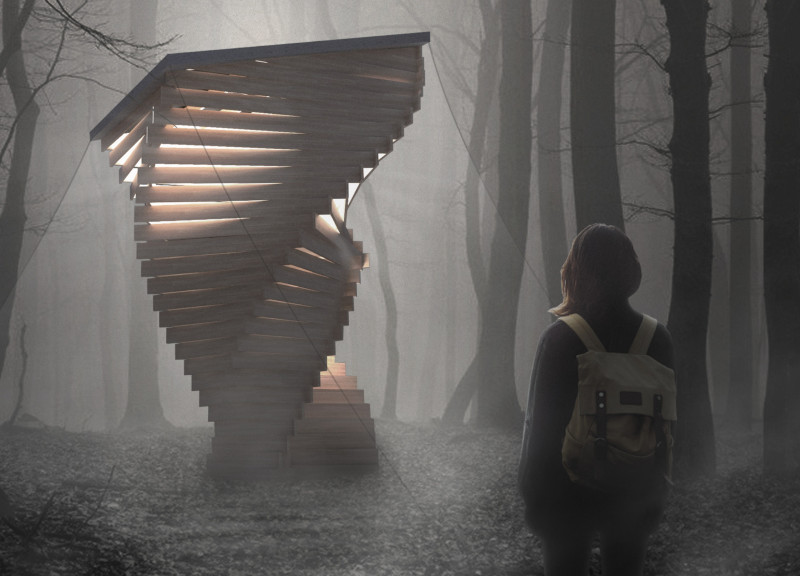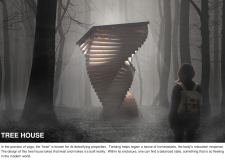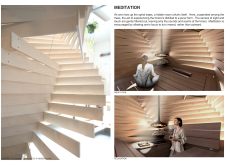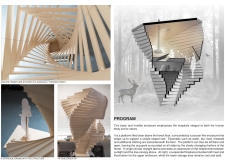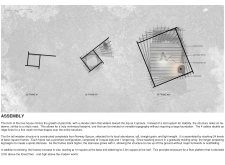5 key facts about this project
The Tree House is a design that integrates structure and nature, creating a space for contemplation and reflection in a forested environment. It focuses on promoting mindfulness and calm, drawing inspiration from the principles of yoga, particularly the benefits of twisting for maintaining balance. The design allows users to connect deeply with the natural surroundings, offering an opportunity for peace and escape from everyday life.
Conceptual Framework
The design emphasizes simplicity and natural harmony. It provides a setting that encourages self-examination and growth. The tree house has a slender stem that broadens at the top, resembling the growth of trees. As occupants climb the spiral staircase, they reach a hidden room that serves as a retreat. This space filters visual distractions, allowing the sounds and scents of the forest to guide the experience.
Spatial Configuration
The elevated platform is a key feature, surrounded by a protective cocoon-like structure. This design enhances privacy while inviting interaction with the natural landscape. Below the platform, essential items such as water and food can be stored, thus keeping the space open for users to fully engage with their surroundings. A distinctive circular skylight lets in light, fostering an awareness of the tree canopy overhead.
Material and Assembly
The tree house makes use of Norway Spruce, chosen for its local availability and sustainability. The assembly method involves stacking square frames arranged in a pinwheel pattern, which supports the structure's strength and allows for the spiral staircase. Stability is achieved through the use of tie-downs, which minimize the footprint of the design. This approach enables building on uneven ground without disrupting the existing ecosystem.
A suspended fireplace is located in the upper area, providing warmth and light. It enhances both the practical function and aesthetic quality of the tree house. As natural light filters down through the skylight, the design invites occupants to immerse themselves in the forest environment. This creates a serene atmosphere that fosters a sense of connection with nature and encourages moments of quiet reflection.


